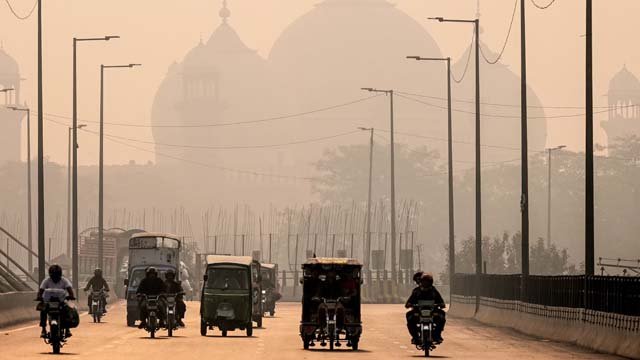The Climate Action Centre (CAC) raised alarm over Pakistan’s dangerous levels of air pollution, stressing that smog, primarily caused by petrol exhaust, is wreaking havoc on public health across Pakistan.
The CAC representatives held an emergency press conference at the Karachi Press Club today highlighting that vehicle emissions contribute 60-80 percent of the pollutants responsible for Pakistan’s worsening air quality.
The experts asserted that the harmful particles from petrol exhaust stick to city buildings and roads, creating toxic soot that penetrates residents’ lungs, raising risks of cancer, respiratory diseases, and heart conditions.
Pakistan’s air quality crisis reached new extremes with Lahore’s Air Quality Index (AQI) exceeding 1,700, and Multan’s reaching a staggering 2,400.
READ: Karachi: Heavy smog causes significant delays in trains’ schedule
Lahore’s PM2.5 levels – particles small enough to infiltrate the bloodstream – were reported at 40 times the safe limit issued by WHO, threatening the health of over 14 million residents.
This issue extends beyond Lahore, affecting major cities like Karachi, Peshawar, and Multan.
Air pollution causes an estimated 100,000 premature deaths annually nationwide, cutting life expectancy by almost four years.
According to CAC’s statement, the government recently imposed temporary solutions like green lockdowns and limited vehicle bans to curb the smog, however, the measures have been proved insufficient.
The CAC representatives urge an urgent transition to electric vehicles, increased renewable energy use, and stricter enforcement of Pakistan’s 2014 emission standards.
CAC also calls for car-free zones and reforms within regulatory bodies like the Sindh Environmental Protection Agency (SEPA) to mitigate air pollution at its core.










